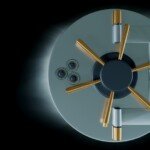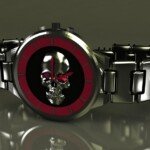Master manufacturing: CNC simulated non-commodity
In today’s relentless pursuit of manufacturing precision and efficiency, Five-axis CNC machining What is possible has been completely changed, thus giving complex geometry and tight tolerances throughout the fields of aviation, medical and automotive. However, the risk of complexity is that a single programming error in the five-axis motion can lead to catastrophic collisions, damaged tools, discarded parts or equipment. This is CNC simulation Beyond is one "good" And become an indispensable guarantee. For manufacturers like Greatlight, operating at the peak of five-axis accuracy is the cornerstone of consistent delivery of flawless, high-value parts.
Unlocking CNC simulation: Beyond the screen
CNC emulator at its core is complex software that can create a Virtual twins Your physical processing environment. It runs your CAM-generated G-code program just like it does on an actual machine, but is entirely in the digital realm. Think of it as a surreal rehearsal phase forward Metal meets metal.
Why bother? Real interests promote adoption
The value proposition goes far beyond seeing only tool path animations:
- Prevent crashes and reduce risks: This is most important, especially in complex 5-axis setups. The simulation accurately predicts collisions between moving parts, tools, holders, fixtures and the workpiece itself. Preventing a single collision can save tens of thousands of repair costs and downtime.
- Accuracy and first success: Verify toolpath geometry for your CAD model to ensure that finished parts match the digital design. It eliminates expensive "try out" On the store floor, a significant increase Right first rate.
- Material and time savings: Identify and fix errors in digital space. No expensive raw materials were wasted. Optimized toolpaths also mean reduced bat machining cycle time.
- Process optimization: The emulator needs not only to perform error checks. They allow engineers Fine-tuning feed raterisk-free setting of spindle speed and tool paths to maximize efficiency and tool life without disrupting production.
- Enhanced machine utilization: Setting up time to reduce and minimize machine downtime (due to crashes or errors) means your high-value CNC equipment spends more time doing what it should be: producing parts.
- Effective training: A safe, cost-effective platform for training mechanics and programmers on complex machine operations and strategies without binding production resources.
CNC emulator essentials: Features you can’t compromise on
Not all simulators are equal, especially for advanced machinery such as five-axis CNC mills. When evaluating a solution, make sure it provides the following key features:
- True kinematic modeling: Universal 3-axis simulation won’t cut it. Essential Accurate copy Kinematics of your specific 5-axis machine – axis motion, travel restrictions, rotary table/rotary head behavior, tool change distance and potential mechanical interference. This fidelity is not suitable for reliable collision avoidance.
- Material removal simulation: In addition to wireframes, you also need to find volume (solid view) simulations. It can be seen from this how The tool gradually splits the inventory, revealing potential chisels, incomplete cuts or remaining unexpected materials – crucial for complex contours commonly found in five-axis work.
- Comprehensive collision and near-lack detection: In addition to the catastrophic crash, the powerful simulator detects dangerous near misses (tool rack brush fixtures, proximity to the restricted Z-axis) and reports with clear visualization. Looking for automatic clearance check Throughout the cutting cycle, all machine components (spindle nose, turret, coolant nozzle, guard).
- Dedicated 5-axis verification algorithm: The algorithm must accurately handle the simultaneous motion of the machine’s rotation axis. There is no way to explain that axis interpolation or pivot point offset can lead to subtle errors, which can only be captured by a true five-axis simulator.
- Machine control simulation: The simulator should accurately mimic the G-code interpretation and behavior of the actual CNC controller brand (e.g. Fanuc, Siemens, Heidenhain). This captures specific control quirks or syntax errors that a general-purpose postprocessor may miss.
- CAD/CAM integration and postprocessor support: You must use the native CAD model and the seamless import of the toolpath generated by the CAM. It is also important to be compatible with the exact postprocessor configuration to ensure that the simulation reflects the code hitting the machine.
- Performance and visualization: Handling the large number of data sets generated in complex 5-axis simulations requires powerful performance and high fidelity visualization to clearly see each potential problem without lag.
Great Advantages: Simulation as a Standard Practice
At Greatlight, high-precision five-axis CNC machining is more than just a service. This is our core expertise. We invest in cutting-edge simulation technology along with advanced 5-axis equipment, as we understand Quality is designed as a process. Before processing any part on our production layer:
- Each program is subject to strict simulation: We won’t skip this step, even if "Obviously very simple" Work. We utilize industry-leading simulators to perfectly reflect the specific configuration of the machine fleet.
- Kinematic accuracy is crucial: Our simulation uses a model of a carefully calibrated single five-axis machine to ensure that the virtual results are exactly matched with the physical reality.
- Simulation-driven optimization: This is more than just checking for errors; our engineers use simulation data to optimize feeds, speeds and tool paths to maximize machining efficiency and part quality.
- Confidence in complex geometric shapes: From complex turbine blades to complex medical implant prototypes, simulations give us confidence and prove that our programs will be performed perfectly, providing challenging and precise components for customer needs.
This commitment to virtual verification is the cornerstone of how we deliver High-quality, complex metal parts on time, within budget, no expensive setbacks. It provides the assurance that success is not accidental but well designed when we run your custom part program.
Conclusion: Simulation – The Basic Bridge to Excellence in Manufacturing Industry
In an age where accuracy and speed are competitive advantages, skipping CNC simulations is an unacceptable gamble. It is a key bridge between digital design and physical reality, turning potential hazards into predictable outcomes. For complex five-axis machining, failure costs are high and investing or utilizing a skilled advanced simulation partner is not optional and is essential. It protects your project schedule, budget and the integrity of your final finished parts. At Greatlight, we use simulation as a fundamental element in making DNA to ensure you work with us to meet your custom five-axis CNC machining needs without compromise on quality and reliability supported with virtual certainty.
Get the accuracy of starting digitally. Contact Greatlight today to discuss how our simulation-verified five-axis machining brings your most challenging projects to life.
Frequently Asked Questions about CNC Simulation (FAQ)
Question 1: Can’t I just rely on running or prove it on the machine? Isn’t simulation overkill?
one: Although dryness is valuable The final Steps, they are risky and perform complex 5-axis machining alone. Simulation provided A safe, comprehensive testing environment You can run the program at full speed and visualize it all Machine components dynamic components and identify subtle collisions or geometric errors long before you install stock. It can prevent "Oh, no" During the drying process, set expensive moments. Simulation can complement physical proofs to make it safer and faster.
Question 2: Does CNC simulation benefit only from large manufacturing companies?
one: Absolutely not! While the upfront cost of high-end simulation software may be important, ROI It is important even for smaller stores by preventing crashes, saving materials, reducing waste, reducing setup time, and extending machine/tool life. Additionally, there are affordable simulation solutions, often integrated with CAM software, for small businesses to access. cost no Simulation work, especially in case of a crash, usually exceeds simulation investment.
Q3: Is CNC simulation difficult and time-consuming learning and use?
one: Modern CNC simulators are designed with user-friendliness in mind. While mastering state-of-the-art features requires training and experience (especially for complex kinematic settings), core features such as core functions such as collisions and tool paths for material removal are relatively intuitive. this Time is used to learn and run simulations Usually much lower than the time lost due to troubleshooting errors or crashing on the store floor. Many CAM systems also offer integrated simulation tools for ease of use.
Q4: Can simulation really detect all potential processing problems?
one: Reliable, correctly configured emulator used Your exact machine model Kinematics is very effective in detecting:
- collision: Between tools, holders, fixtures, machine components and inventory.
- Nearly illusion: Identify unsafe gaps.
- Tool sign error: Air cuts, incomplete cuts, excessive stocks remaining, dig holes.
- Machine travel restrictions violations.
Detecting problems such as poor surface treatment is less effective due to incorrect feed/speed (although optimization features help) or subtle material deformation. It remains an essential mechanical verification tool.
Q5: Why does Greatlight specifically emphasize simulation in five-axis machining?
one: Five-axis machining introduces significant complexity and moves simultaneously across multiple rotational axes and linear axes. This index increases Number of potential collision points And make the visualization tool and machine components interacting extremely challenging. Simulator kinematics (the specific way axes move together physically) become crucial. Universal 3-axis simulations simply cannot predict unique spatial conflicts that may be possible in a dynamic 5-axis environment. The simulation tailored for precise machines like ours at Greatlight is The only one Reliable method to ensure the safe and accurate execution of complex 5-axis programs.

















